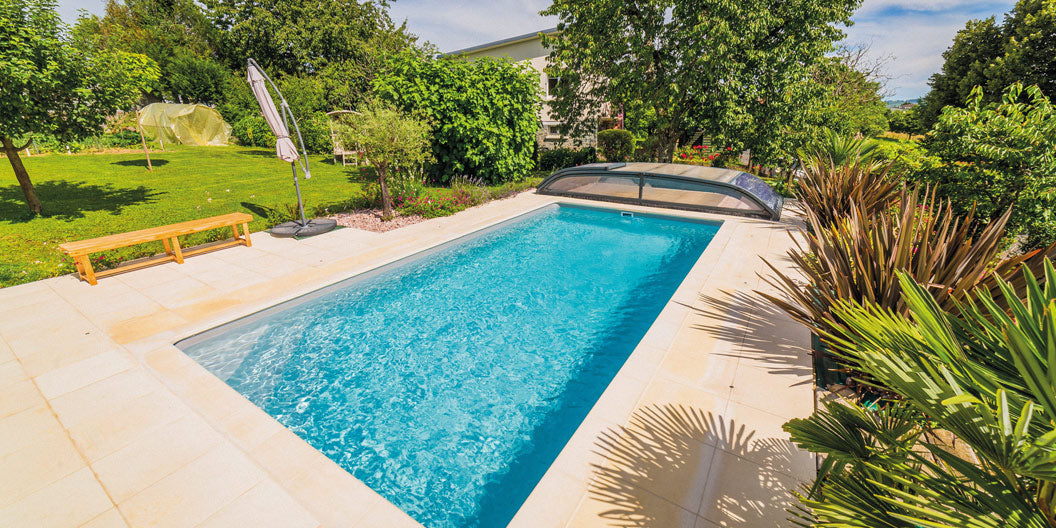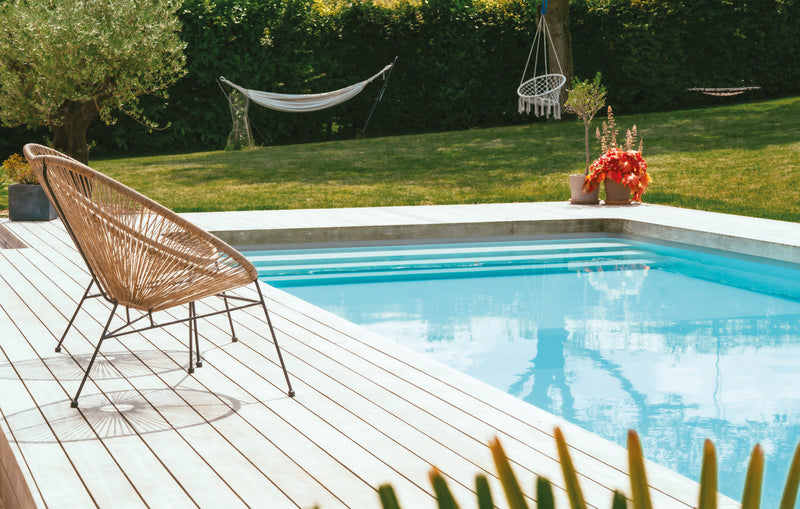- Welcome
- Desjoyaux advice
- fr_FR
-
When and how to change your swimming pool liner?
When and how to change your swimming pool liner?
Posté leChanging your pool's liner is a crucial step to ensure its watertightness and maintain its aesthetic beauty.

A well-maintained liner is essential, as it plays a key role in preserving the quality and safety of your pool. However, over time, exposure to chemicals and natural elements can cause its wear. Recognizing the signs of wear and knowing when and how to change your in-ground pool liner is therefore essential to prolonging the life of your aquatic space.
Liner alert: deciphering the signs of aging
The liner, whether reinforced or standard, is subject to various wear and tear factors. Warning signs that your liner needs replacing include a dull appearance, porosity to the touch, cracking, wrinkling, or noticeable discoloration. These symptoms generally indicate a loss of elasticity and reduced resistance to damage, often accelerated by the chemicals used to treat the pool water. It's also important to monitor any loss of water resistance, a clear sign that the liner is no longer performing its function properly.
The Art of Choice: Selecting the Ideal Liner for Your Pool
Choosing the right liner for your pool is a decision that must take several factors into account. Liner thickness, for example, is a key criterion for in-ground pools, as it directly influences the liner's durability and strength. A reinforced liner, with increased thickness, offers greater resistance, especially in pools that are heavily used or subject to extreme weather conditions. Furthermore, the geometric shape of your pool can also influence the type of liner to choose, with some shapes requiring specific liners for a perfect fit.
Perfect timing: choosing the right moment for a new liner
Changing your liner isn't something you can just do on the fly. It's all about choosing the perfect time to avoid disrupting your pool's use. Traditionally, spring is the best time to undertake this work. Weather conditions are generally more favorable, neither too cold nor too hot, making it ideal for handling and installing the liner. Furthermore, making this change before the summer season ensures your pool is ready and welcoming for the warmer weather.
Renewal: Key steps for a brand new liner
Replacing a liner requires meticulousness and precision. Here are 9 steps to follow to help you replace your liner:
• Step 1 – Empty the pool : Start by completely emptying the pool. It is important to proceed carefully to avoid damaging the structure during this step.
• Step 2 – Remove the old liner : Carefully remove the old liner from the pool. Be careful not to damage the surface underneath during removal.
• Step 3 – Clean and prepare the surface : Thoroughly clean the surface where the new liner will be installed. This step may include sanding to smooth out any rough spots and make the surface as flat as possible.
• Step 4 – Install the protective felt : Place a protective felt. This felt will help protect the liner and ensure a smooth and even surface for its installation.
• Step 5 – Unfold the new liner : Unfold the new liner carefully. Make sure to align the edges correctly and smooth the liner to avoid wrinkles or air bubbles.
• Step 6 – Position the bottom drain : After having perfectly installed the liner, position the bottom drain of your pool in its intended location. Make sure that it is correctly fixed and watertight.
• Step 7 – Start filling the pool : Start filling your pool by adding a few centimeters of water. This initial step will allow you to check whether the liner installation has been carried out correctly.
• Step 8 – Installation of the Discharge Nozzles : When the filling reaches approximately 6 cm below the location of the discharge nozzles, proceed to install them as well as the various flanges of the parts to be sealed.
• Step 9 – Finalize Filling : Continue filling the pool until the desired water level is reached. Ensure all installations are secure and functional.
Expertise to the rescue: knowing when to call a pro
Although some pool owners choose to replace the liner themselves, hiring a professional can often be a good idea, especially for complex or large pools. A professional has the experience and tools necessary to ensure a flawless installation, while adhering to safety and quality standards. Additionally, an expert can also advise you on the best type of liner for your pool and your needs, ensuring a long-lasting and aesthetically pleasing result.
Long life for the liner: secrets of effective maintenance
To ensure a long lifespan for your new liner, regular maintenance is essential. Be sure to limit the use of harsh chemicals, as these can accelerate liner wear. It is recommended to maintain a balanced pH level in your water, as an imbalance can affect the color and structure of the liner. Additionally, frequent cleaning helps prevent algae and limescale buildup, helping to preserve the integrity of your pool liner.
The Aquatic Epilogue: A Summary for a Revitalized Pool
In conclusion, replacing your liner is a task that requires precision and attention. Whether you opt for a standard liner or a reinforced liner, following these steps not only ensures your pool's watertightness but also its aesthetic appeal. Remember that professional intervention can be invaluable, especially for complex-shaped or in-ground pools. With proper maintenance and the judicious use of chemicals, your pool will remain a place of pleasure and relaxation for many years to come.
Do not hesitate to contact Desjoyaux for any advice or assistance in the process of replacing your liner.
You are probably asking yourself the following questions:
What is the lifespan of a liner?
The lifespan of a liner is approximately 10-12 years on average. Proper maintenance of the pool, and therefore indirectly of the liner, will extend this lifespan.
What to do with your old liner?
There are several options:
1. Recycling: Some liner materials can be recycled. Check with your municipality or a local recycling company.
2. Creative Reuse: The old liner can be reused for DIY projects, such as tarps, bags, or other useful items.
3. Disposal: If recycling or reuse is not possible, dispose of in accordance with local waste regulations.

